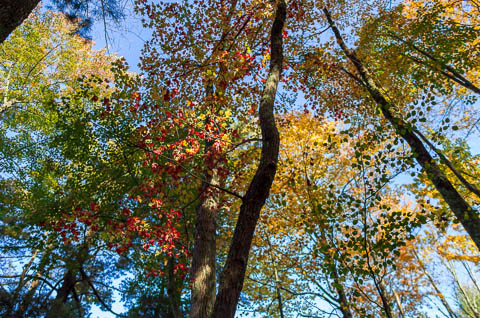
Do Trees Talk?
One of the most amazing discoveries of the last 20 years is that forests act in many more ways as a single organism than we previously knew. Researchers have learned that trees can communicate with each other through their roots. But not directly; they cooperate with what we call Mycorrhizal (micro-rye-zal) fungi. This fungal network connects trees of all species throughout the entire forest. When one tree is injured, it is able to send out a warning signal to all other trees in the forest, and surrounding trees have been observed channeling extra resources to the ailing tree, regardless of the three species.
The relationship between trees and the Mycorrhizal fungi is based on a simple exchange stemming from the limits of each species. Trees can synthesize sugar (photosynthesis), but can't dissolve minerals. Fungus can't produce sugars, but it's specialty happens to be dissolving minerals from hard materials in the forest floor (like rocks anda animal bodies). So, they trade. The trees provide sugars to the fungi and the fungi transports dissolved minerals back to the trees. It also appears that trees can use the fungi to "communicate", sending signals and even resources from one tree's root system to another's. The complicated network might even function as a kind of "supraorganism".
Mycorrhizal Fungi Fun Facts
- This fungi is able to decompose animals and send them directly to trees. Salmon has been found in tree rings!
- Able to break up pebbles to extract nutrients.
- Some fungi can attack, kill, and extract nutrients from insect living in the soil.
- Allow trees of all different species in the forest to communicate.
You can find Mycorrhizal fungi too!
1. Look for a nearby rotting log.
2. Pick up the log and look on the underside for fungus that looks like white, hairy threads.
3. Return the log to the place you found it.